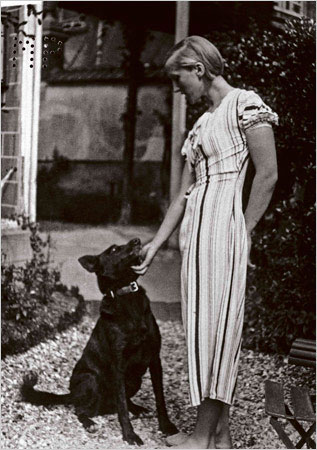With Valentine’s Day this week, the concept of love in art work is more prevalent than any other time of year, along with the Valentine's Day flowers. Ken Johnson, art critic for New York Times, provided an editorial musing about the themes of love he found in art around New York City including Metropolitan Museum of Art , and the Whitney Museum. From "Sleeping Eros" sculpture of the Greek god of love, to the erotic abstract expressionist work of Georgia O’Keefe, to the Statue of Liberty, Johnson explores the symbolism of love in art in its various formations and versions. Throughout all these examples, Johnson returns to art's unique ability to evoke sentiment and substantiate his argument that the appearance of love in art can more truthfully explain the meaning of love over any dictionary definition.

Interestingly enough a Picasso painting "Femme assise pres d’une fenetre" of the artist’s mistress sold for $45 million, over six times the amount it was last sold for in 1997, on Tuesday February 5th at the most recent Sotheby’s auction in London. While the extraordinary price says more about the growing value of Picasso’s work despite a struggling economy, I can’t help but ponder if the buyer was moved by the scent of love in the air. In fact, the other item that “had nearly stolen the limelight” earlier at the auction just happened to be another amorous creation, a series of works on paper by Egon Schiele, "Lovers (Self Portrait With Wally)".
These works not only dealt with themes of love, but were direct
translations from the artists’ personal lives. Picasso’s "Femme assise pres d’une fenetre" depicts Marie-Therese Walter, Picasso’s muse for many years, and a recurring model. She appears in our gallery in a lithograph and collotype, "Tête de Femme." As a viewer, my fascination with the muse may stem from a voyeuristic look into the artist’s life. It allows the viewer to pry into peer into the private first-hand perspective of the artist. We empathize with our artist, we admire as he admires. While Picasso had many muses, each one evokes sincere adoration. In both works Picasso uses an abstracted drawing style that exaggerates her features. She is beautiful, but not because of her conventionality, rather her striking angular features, and confident expression. This image of love does not appear contrived or symbolic, yet it still has the ability to affect the viewer, as we try to connect with Picasso and grasp his emotions during the conception of his works.
The recent Sotheby’s success is proof that I am not alone in my voyeuristic pleasure, and I may dare to suggest that Picasso could have enjoyed such a behavior as well. In the stunning, "The Embrace" by Picasso, the painter and viewer are observing the love of a couple. As if painted from a window, a man and woman’s intimacy is captured. The earthy red of female figure paired with the calming cool blues of her partner emanates the serenity and warmth of love. It is Picasso, the artist, who captures the moment, paying careful attention to color and composition in order to emphasize the mood. The work is still able to incite emotions, but we feel the other side of love, our instinctive longing for closeness. The removed perspective only intensifies this desire, as we crave the affection depicted in "The Embrace."
Cited Citations:

